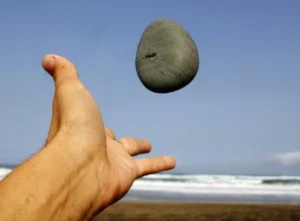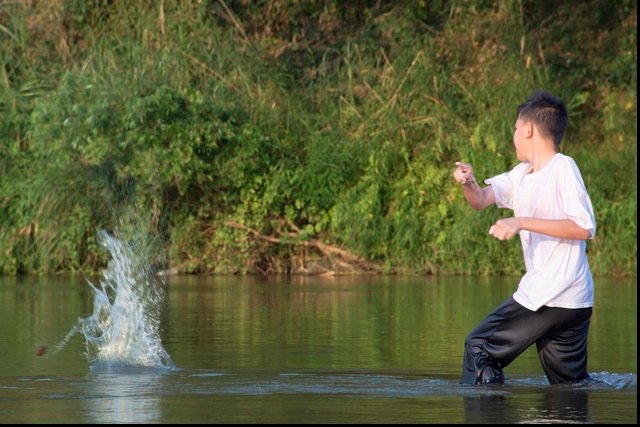You stand atop a bridge or ledge overlooking a river, with a substantial mound of rocks nearby. Your purpose is clear.
Any individual identifying as male can relate to the compelling urge to launch a sizeable stone into an unsuspecting body of water. What might appear as a mindless and instinctive activity is, in fact, deeply rooted in scientific understanding, shaped over millennia of human evolution.
From time immemorial, men have engaged in the act of hurling various types of rocks at assorted targets. From the iconic Stonehenge in England and the ancient practice of discus throwing in Greece to the renowned Rolling Stones, the first globally recognized rock band, the act of rock-throwing (distinct from stone skipping) has woven itself into the tapestry of masculine history. Cave drawings on the Isle of Man portray early human males heaving massive boulders at woolly mammoths and saber-toothed cats, with one cave even holding petroglyphs that crudely translate to “Me see rock, me throw.”
One of the standout historical instances of rock-throwing finds its place in George Washington’s crossing of the Delaware River in 1776, a pivotal moment in America’s quest for independence. Often overlooked, Washington flung a sizable stone into the Delaware to fracture the ice, clearing a passage for his boat to advance towards battle and delivering a thrilling icy splash for his companions on board. Undoubtedly, this event etches itself as a cornerstone in the annals of American rock-throwing history.
To unearth the rationale behind this phenomenon, one can delve into the scientific exploration of male archetypes (distinct from horoscopes, which are, in the speaker’s opinion, nonsensical and targeted at females). Research has discerned that males who associate with the “alpha” label tend to engage in rock-throwing at a higher rate and with greater weight capacity compared to those identifying as “beta,” “sigma,” or “lambda.” While “sigmas” might fall short in weight capacity, they excel in creating a larger splash radius. Operating as solitary figures, “sigmas” thrive in isolation. Irrespective of the unique attributes each archetype brings forth, the desire to create a significant splash unites all men.
Propelling an ancient igneous mass into a body of water symbolizes, for many men, a tangible representation of the impact they’ve left on the world. Rocks, as ancient as time itself, lack the capacity to relocate independently. How else, one might ponder, are mountains formed? A local anecdote contends that Mount Everest owes its existence to traders tossing rocks from a nearby pile into a natural hot spring, resulting in the rocks colliding and fusing over time to forge the world’s tallest peak. Some may counter this assertion with evidence of tectonic plate movement forming mountains, but the narrator disputes this with a tongue-in-cheek remark, asserting Earth’s flatness.
Despite the array of attitudes and methods surrounding rock-throwing, the fact remains that casting stones into water forms an integral facet of male identity and humanity’s historical narrative. So, the next time you find yourself in proximity to rocks and water, honor your inherent instincts and let loose without inhibition.

Again: men, rocks, water – why?
According to the insights of archaeologist and geologist Dr. Reid Ferring, the activity of hurling substantial objects likely dates back hundreds of thousands of years in human history. This practice was prevalent during the late Homo erectus or early Neanderthal eras, often involving group participation. Moreover, it’s tied to survival instincts – what other option existed to fend off a saber-toothed cat, safeguarding one’s well-being and sustenance?
There’s even a Reddit thread dedicated to finding the answer to the mystery.
“Cause it’s just peaceful. You just need yourself and no one else,” one said. “You got nothing to do, but you look around and you see some rocks and just figure out how to enjoy yourself with the most mundane sh*t. But sometimes, that mundane shit is what makes it all worth it.”
Another suggested that “There’s something about a physical act that elicits a visual and auditory response. Skipping stones effectively is very satisfying and so is the really loud kERplUnk a large rock makes when tossed in.”
One humoured, “Everyone loves the kERplUnk”, while another also expressed their obsession with the sound, “Because it honestly feels satisfying to hear the splash once you throw the rock into the water,” they said.



